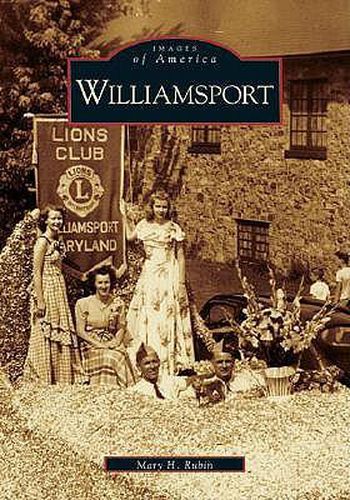Readings Newsletter
Become a Readings Member to make your shopping experience even easier.
Sign in or sign up for free!
You’re not far away from qualifying for FREE standard shipping within Australia
You’ve qualified for FREE standard shipping within Australia
The cart is loading…






Conococheague and Potomac Streets, Doubleday Hill, Springfield Farm, the C&O Canal–these names conjure up images of Williamsport, Maryland. The first settlement in what was to become Washington County was located here in the heart of the Cumberland Valley in the late 1730s. This small trading post, set amid local Native American tribes, formed the basis of the town of Williamsport. Gen. Otho Holland Williams, a Revolutionary War hero from the region, laid out what he intended to be a grand city with wide avenues on the banks of the great and mighty Potomac. Upon hearing that George Washington favored a site along the Potomac for the new nation’s capital, Williams persuaded Washington to visit his town, and Williams’ Port was given due consideration as a possible location. Williamsport became an important stopping-off point for settlers heading west, and the town quickly grew to be the second largest in Washington County. The arrival of the Chesapeake and Ohio Canal in 1834 brought a boom to Williamsport as warehouses, shipping firms, and many other businesses were established to handle the increased population and trade. The Civil War, the arrival of the railroad, and a series of disastrous floods also impacted the town. Today, Williamsport is a quiet community rich with local history and flavor.
$9.00 standard shipping within Australia
FREE standard shipping within Australia for orders over $100.00
Express & International shipping calculated at checkout
Conococheague and Potomac Streets, Doubleday Hill, Springfield Farm, the C&O Canal–these names conjure up images of Williamsport, Maryland. The first settlement in what was to become Washington County was located here in the heart of the Cumberland Valley in the late 1730s. This small trading post, set amid local Native American tribes, formed the basis of the town of Williamsport. Gen. Otho Holland Williams, a Revolutionary War hero from the region, laid out what he intended to be a grand city with wide avenues on the banks of the great and mighty Potomac. Upon hearing that George Washington favored a site along the Potomac for the new nation’s capital, Williams persuaded Washington to visit his town, and Williams’ Port was given due consideration as a possible location. Williamsport became an important stopping-off point for settlers heading west, and the town quickly grew to be the second largest in Washington County. The arrival of the Chesapeake and Ohio Canal in 1834 brought a boom to Williamsport as warehouses, shipping firms, and many other businesses were established to handle the increased population and trade. The Civil War, the arrival of the railroad, and a series of disastrous floods also impacted the town. Today, Williamsport is a quiet community rich with local history and flavor.